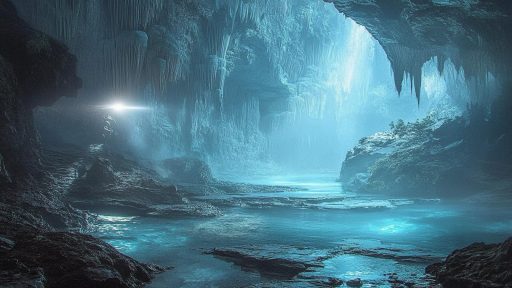
Evolution is often thought of as a process that unfolds over millions of years, but sometimes, nature speeds things up. In certain corners of the world, species have adapted to extreme changes in their environment in a matter of years—or even months. These real-time transformations offer a jaw-dropping look at evolution happening before our eyes. From shrinking elephants to city-dwelling lizards, these living examples are rewriting what we thought we knew about survival and change.
The Italian Wall Lizard’s New Diet

When a few Italian wall lizards were moved to a new island in the 1970s, no one expected what came next. Within just a few decades, they developed a completely new digestive structure—cecal valves—to break down a plant-heavy diet, something unheard of in their original population. This marked not just a behavioral shift, but a physical evolutionary change. Scientists called it one of the most rapid cases of observed adaptation in vertebrates.
The London Underground Mosquito

A strange new mosquito began biting Londoners during WWII—one that didn’t exist before the tunnels were built. Trapped in the Underground, this mosquito evolved into a separate species that thrives in enclosed spaces, doesn’t need to hibernate, and prefers feeding on humans and rats. Despite its close relation to the surface-dwelling Culex pipiens, the underground variety is now genetically distinct. It’s evolution, compressed into a few decades of isolation.
The Shrinking Elephants of Sri Lanka

In Sri Lanka, researchers have noticed something unexpected—elephants are getting smaller. The theory is that poaching has unintentionally encouraged the survival of smaller, tuskless males who are less likely to be targeted. Over time, these traits are becoming more common in the population. Evolution, in this case, is driven not by nature, but by human interference.
Fish That Adapted to Toxic Waters

Several fish species in polluted U.S. rivers have evolved remarkable resistance to industrial toxins like dioxins and PCBs. The Atlantic killifish is a standout example, having developed genetic mutations that protect it from pollutants lethal to most aquatic life. This change happened within a few generations, astonishing scientists with its speed. It’s a gritty, grimy version of survival of the fittest—right in our backyard.
High-Altitude Mice in the Andes

In the Andes Mountains, mice have been found thriving at elevations previously thought uninhabitable. These rodents have evolved larger lungs, more efficient blood oxygenation, and enhanced cardiovascular systems—all in response to the extreme altitude. The changes have occurred quickly in evolutionary terms, and they demonstrate how climate and geography can force rapid biological innovation. These mice are becoming living blueprints for life on the edge.
Peppered Moths in Industrial England

Once mostly pale to blend in with lichen-covered trees, peppered moths darkened dramatically during the Industrial Revolution. As soot coated tree bark, darker moths were better camouflaged from predators, leading to a population boom in the melanic variety. When pollution decreased decades later, lighter moths made a comeback. It’s one of the most famous examples of evolution in action, shaped entirely by human-caused environmental change.
Lizards That Conquered the Concrete Jungle

In urban areas of Puerto Rico, anole lizards have developed longer limbs and stickier toe pads to better navigate smooth surfaces like glass and metal. These changes have happened in just a few generations, reflecting how quickly evolution can respond to new environments. They are physically different from their forest-dwelling cousins, despite being the same species. Nature is literally reshaping them for city life.
Bacteria That Outsmart Antibiotics

Antibiotic-resistant bacteria are one of the most pressing medical concerns today—and they’re evolving at breakneck speed. Strains like MRSA have developed defenses against multiple drugs, sometimes within just a few years of new antibiotics being introduced. Their genetic adaptability is staggering, often fueled by overuse of medications. It’s an ongoing arms race between human science and microbial survival.
Bedbugs Becoming Pesticide-Proof

Once nearly eradicated in many regions, bedbugs have made a dramatic and uncomfortable comeback. These pests have developed strong resistance to common insecticides, making traditional extermination methods increasingly ineffective. Genetic mutations have allowed them to detoxify chemical treatments that used to kill them. It’s evolution with a vengeance—and it’s happening in bedrooms worldwide.
Birds Changing Their Songs for the City

Urban noise pollution is forcing songbirds to sing louder, faster, and at higher pitches to be heard. Species like the great tit have changed their vocal patterns in city environments, with noticeable differences from their rural counterparts. These adjustments are not just behavioral—they’re being passed down and amplified across generations. Evolution is rewriting their language, one honking car horn at a time.
Salmon Adapting to Warming Waters

In the Pacific Northwest, salmon populations are evolving to spawn earlier due to rising water temperatures. Warmer rivers threaten their traditional spawning cycle, prompting natural selection to favor early migrators. This shift has occurred over a surprisingly short timespan. It’s a race against climate change, and evolution is doing its best to keep up.
When Evolution Hits Fast Forward

These stories challenge the idea that evolution is slow and predictable. From cities to toxic rivers to remote mountains, life is adapting right under our noses—sometimes faster than we can study it. Whether driven by climate, urbanization, or human interference, these changes show just how flexible and astonishing the natural world can be. Evolution doesn’t always wait millennia. Sometimes, it moves at the speed of survival.





